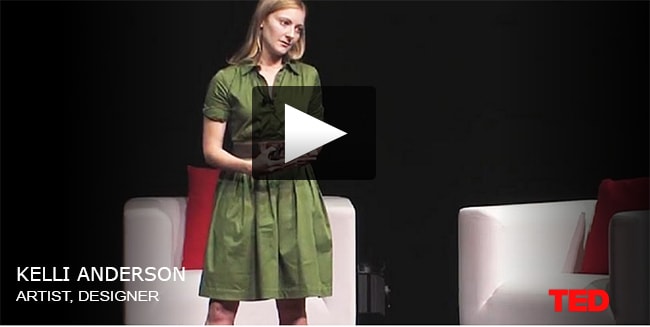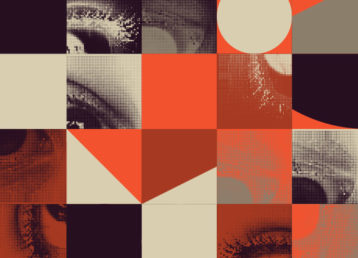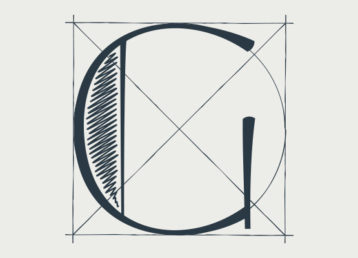15 TED Talks that Inspire Design Thinking

Featured Image: freepik.com
“The intellect has little to do on the road to discovery. There comes a leap in consciousness, call in intuition or what you will, and the solution just comes to you, and you don’t know from where and why.” – Albert Einstein
The quote kind of says it all about design sense, it is more of an intuitive process and doesn’t have much to do with intellect. Of course knowledge and communication skills can make us good presenters but for the idea generation of the design process you need to have an active gut feeling. What designers need to focus on goes beyond ideation. A simple product or service design is not the task at hand for designers. They are expected to conceive a marketplace and envision how people would want to use what they made.
Let me quote Thomas Edison in this context, a scientist who is famous for his signature invention of light bulb. That is old news but this ingenious invention would have been dust without electric power generation and transmission. This goes on to prove that Edison truly had a vision.
Likewise when we say a product has failed it’s not because it was not good enough but because the creators failed to envision the use of the product in the big picture. A discrete device no matter how creative cannot produce an impact on its own. We need organization and a collective approach and there is no better place to understand design thinking than TED.
1. Tony Fadell
Tony Fadell covers the stage of empathy in design thinking. He says when things happen too frequently you don’t notice them just like Hertzberg’s hygiene factors. It is the job of a designer to notice things in his surroundings. As human beings, we get used to “the way things are” really fast. But for designers, the way things are is an opportunity … Could things be better? How? In this funny, breezy talk, the man behind the iPod and the Nest thermostat shares some of his tips for noticing — and driving — change.
Design Thinking – noticing is empathizing
2. Aris Venetikidis
Cognitive maps make visual constructs that help us in our own understanding of intricate ideas. They might differ from a geographic map to a great extent which Aris refers to as the distortion of real information. He deciphered the language of way-finding in our brain and created a visually simplified map that is clear to understand and includes complete information instead of incomplete or misleading data.
Design thinking – visual interpretation
3. Chip Kidd
Clarity gets to a point where it’s blunt and communicative but mystery is blanch. It’s an unclear representation of ideas. Chip finds this challenge rather interesting. In this presentation, he is telling us how his book cover design clarifies the mysterious ideas and then present them in a visual way. He also points out how mystery can be useful when it comes to product packaging. Enough said, check the video.
Design thinking Yin and Yang – Finding a balance
4. Chris Jordan
He converted the meaningless data that our brain is unable to comprehend and provides a visual face to enormous statistics. So we all can agree on one point that visual language is more universal. It not only simplifies data but also creates feelings that have somehow gone missing. This insightful artist is trying to create feelings on a deeper level so that things worth considering should matter to us. Watch the complete video for his BIG question.
Think design – Turning stats into art
5. Margaret Gould Stewart
We innately believe design to be restricted to branding and imagery and most of our efforts are focused on that. Designs of digital experiences are just as crucial. To make web experiences visually enticing and profoundly functional, designers have to be really smart. They have to work on even the tiniest details to enhance and maintain user experience and Margaret explains this with an amazing example. She points out how scalability is a challenge and how web owners are dealing with it.
Design thinking in enhanced user experience on the web
6. David Carson
We all have this innate ability to discover, and no matter how much we try to avoid it, our eyes pick up things in our surroundings. Take a look at David Carson’s discovery of intuitive ideas that contributed to some great designs.
Design thinking ideas from discovery
7. Mathew Carter
Type is very adaptive and every designer adds their own bit to customize it. What might sound interesting is the fact that technology acted as a catalyst to the whole type generation process. Watch a transition of type to digital as Mathew Carter presents his work. Learn how it affects the present modern world.
Design Thinking – Tech behind type
8. David Kelley
One of the most crucial aspects of design thinking is product design. The designers who specialize in this category have moved to human centric concepts that can connect with us on an emotional level. This is the focus of David’s presentation. The connection is not just limited to products now. The whole shopping experience is evolving towards simplicity. However, the simplification process is not all that simple, it requires customization of technology. A recent drift has been observed in the way those retail stores and users shopping experiences are designed. It’s like empathizing with the buyers and correctly guessing how they want their experience. Enough said, I will let David do the talking from here onwards.
Design thinking – Human centered designs
9. John Maeda
Simplicity is about living life with more enjoyment and less pain but complexity is what we enjoy looking at. In this presentation John Maeda shares with the audience some of his life’s experiences where he is trying to run away from simplicity after writing a book on it but it keeps catching up. It’s not one of those difficult to digest presentations. The idea of simplicity in design is thought provoking and he makes it look interesting. See for yourself.
Design thinking for simplicity
10. Kelli Anderson
Kelli presented three of her projects that appears to me as the most fascinating interactive designs created out of paper. She certainly knows how to meddle with paper and display its untapped capabilities. In one of her projects, she created a record player from paper for a wedding invitation. You heard me. Watch it to believe it!
Design thinking for disruptive techniques
11. Marian Bantjes
She presents design thinking in her own personalized way. According to her, it is something that brings joy, a sense of wonder, and invokes curiosity. Previously she followed a design strategy in her work but now she follows her heart. Take a look at a journey of career transformation of this amazing graphic design and you will know how intricacy can sometimes be beautiful.
Design thinking – Intricacy is beautiful
12. Jessica Green
Jessica has a whole new perspective on invisible life-form. Our bodies and homes and everything around us is covered in microbes — some good for us, some bad for us. As we learn more about the germs and microbes who share our living spaces, TED Fellow Jessica Green asks: Can we design buildings that encourage happy, healthy microbial environments? Her idea is brilliant and challenging at the same time. Can designers create the correct correlation to design in the invisible world? Well here’s your chance to find out.
Design thinking for the invisible worlds
13. Sebastian Deterding
What does your chair say about what you value? Sebastian Deterding, an interface designer shows how our visions of morality and what the good life is are reflected in the design of objects around us. Technology and design influences our behavior but what are the implications when these two are combined together. Let’s explore the answers in Sebastian’s presentation.
Design thinking – reflections of morality and visions
14. Manuel Lima
Manuel Lima is an infographics expert who is discussing a historic way of data representation. He shows how trees are a good way to map data without meaning and turn it into something expressive. This form of representation makes it easy for our minds to analyze the data that appears tedious, boring and not to forget visually repulsive. Watch Manuel’s take on the topic.
Design thinking – visualizing big data
15. Paul Bennett
Some good ideas are staring at us right in the face but we are unable to see them because they are obvious. Somehow in the back of our mind we believe all the special things are not obvious. It’s truly a misconception and perhaps the biggest hurdle to design thinking. Delve into this presentation to see how it works.
Design thinking look for the details
The world of design thinking holds limitless possibilities for creative thinkers as well as strategists. Did you ever image it could create new avenues for logo designers? With design thinking approach to create logo design, the process flow can be better streamlined for both designers and clients. Do you agree? Share your thoughts.



